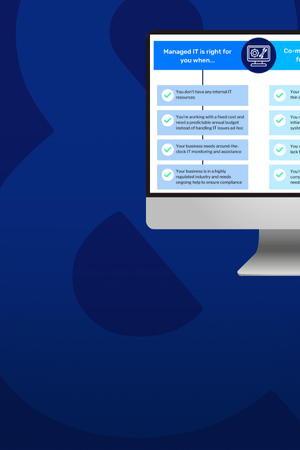Anyone who develops or actively manages an integrated financial planning/reporting solution for a government contractor knows just how intricate and interdependent all of the models can become. Whether it is managing long lists of projects with tons of attributes (funding, status, etc.), complex direct revenue models or capturing/allocating indirect expenses appropriately, the complexities can go on and on. Luckily, with the shift to cloud platforms as the basis for these solutions, the ability to standup a more efficient and standardized model is much easier than in years past. Over the last year in particular, we have seen a fairly rapid adoption of Oracle’s Enterprise Planning and Budgeting Cloud Service (EPBCS), which comes with pre-configured modules/content that is tailor-made to the types of models that are required (and that we used to build from scratch) in the GovCon space. Specifically, EPBCS creates out-of-the-box metadata, data entry forms, dashboards, and calculations that allow for a quick implementation and an easy-to-use application. With a Projects module, a Workforce module, and a Financials module to tie everything together, EPBCS is the way to go if you’re a government contractor looking to enhance your budgeting and forecasting process.
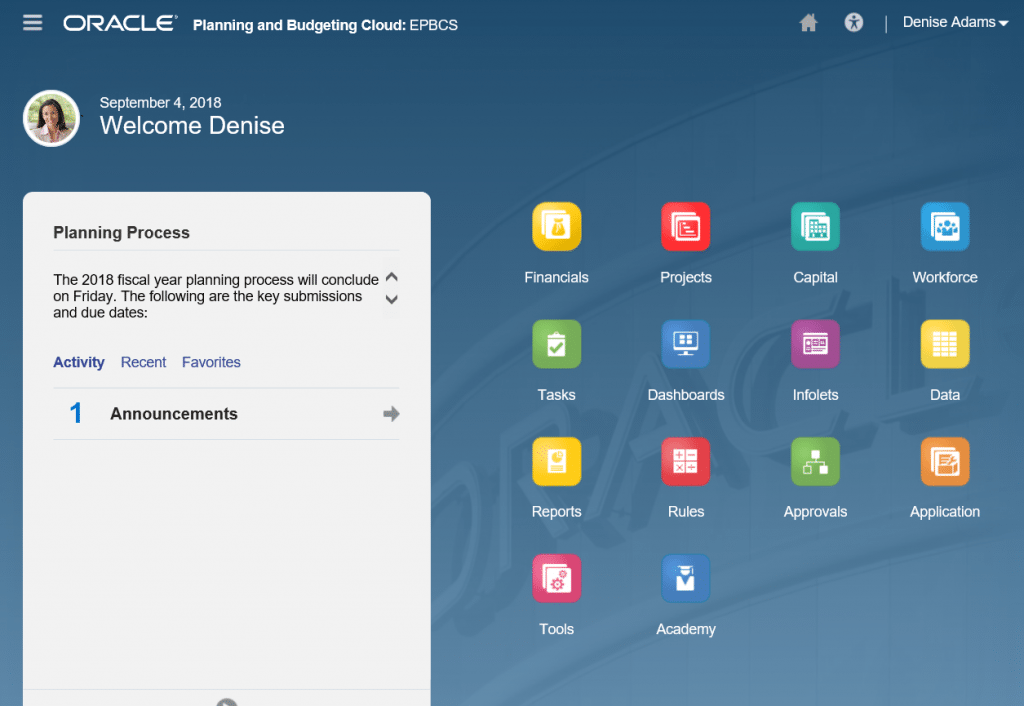
Projects
In the Projects module, users can plan for revenue-generating projects such as cost plus projects, time and materials projects, and fixed price contract projects. EPBCS also comes with pre-configured dashboards for quick and easy review of financials and KPIs.
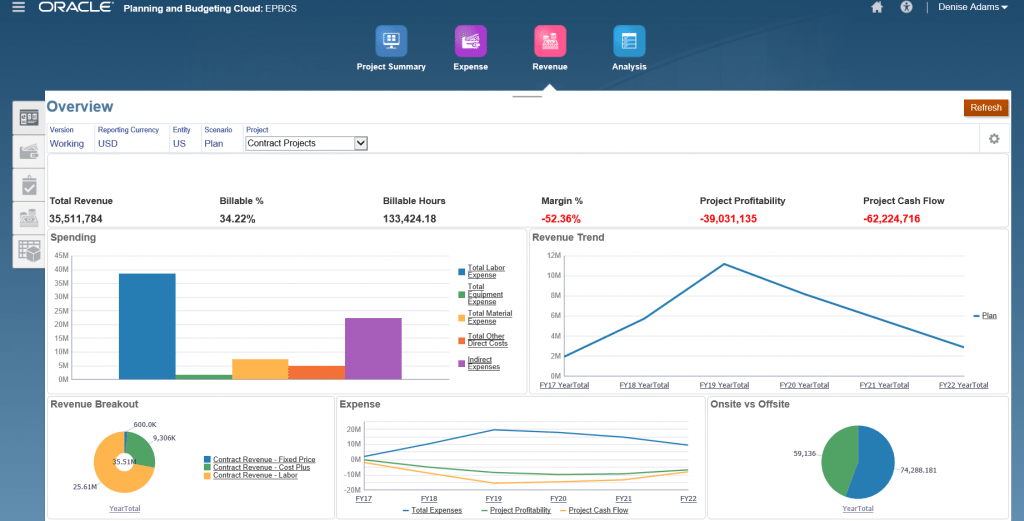
When creating a new project simply select the applicable project type and the application will automatically add your new project to the correct hierarchy to be used in the appropriate revenue calculations.

Cost Plus Projects
For cost plus projects, revenue is calculated based on the margin percentage input by the user. The out-of-the-box functionality allows users to set the margin percentage at the Total Expense level or input different percentages for planning at a more detailed level. Once the user selects the driver (or drivers) and enters the corresponding margin percentages, the “Calculate Revenue” rule will do the rest.
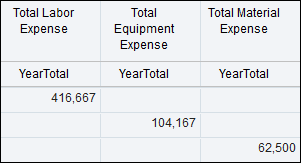
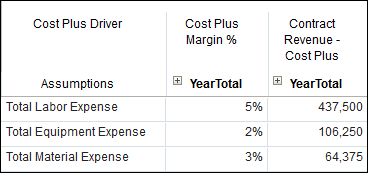
As you can see, with just a few clicks and inputs on the pre-built web forms, the dynamic pre-built calculations generate the cost-plus revenue for your project.
Time and Materials Projects
A driver-based model that captures labor, material, and equipment is used to calculate revenue for time and materials projects. As you can see in the example for labor below, simply enter labor assumptions and a billing rate and EPBCS will automatically calculate your forecasted or budgeted revenue.
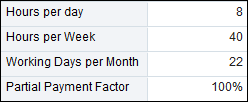

The module dynamically forecasts for the time and materials revenue based on the start date and end date of the project input by the user. In this example the start date is January 1st and the end date is December 31st. Based on these inputs the application calculates the revenue as follows:
$50 rate x8 hours per day * 22 working days per month* 12 months (Jan – Dec) = $105,600
Fixed Price Contracts
Because of the static nature of fixed price contracts, direct input is used to enter revenue for fixed price contracts. Simply enter the contract revenue on the pre-built web form for your fixed price project and the data will be available for reporting and analysis.
Revenue Recognition
In addition to the functionality for managing different project types, the module also calculates revenue based on the revenue recognition frequency and the cash flow incidence entered by the user. The application has drop-down menus to select the revenue recognition frequency and cash flow incidence, and the module calculates revenue appropriately. There is also built-in functionality to perform revenue recognition what-if analysis to aid in the decision making process when setting the financial terms of contracts.
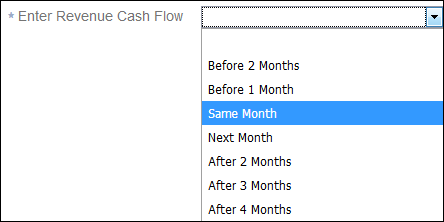
Dimensionality
The out-of-the-box dimensionality of the Projects module also provides benefits for overall project management. “Program” is an out-of-the-box attribute dimension that can be utilized to summarize a group of projects into a logical reporting group. Since projects are added to the Project hierarchy based on project type, this can be especially useful for fast and dynamic reporting.
The out-of-the-box “Stages” dimension also allows for more robust reporting. This dimension, which can be constantly updated, allows users to view which stage of the project any specific project is currently in. It also allows users to see a comprehensive list of all projects in a certain project phase.
Now that we’ve gone through the project revenue planning benefits of EPBCS, it’s time to discuss the other components of the government contracting budgeting and forecasting process to get a fully populated and accurate P&L.
Workforce
Another key component of the government contracting model is indirect labor. And look at that, EPBCS has a Workforce module with out-of-the-box compensation planning that is perfect for planning for indirect labor. The module is designed to allow for planning by employee and/or job. Furthermore, there is pre-built functionality to plan for to-be-hired employees and to transfer those plans to a specific employee once hired. To go along with new-hire functionality, the Workforce module also has the capability to plan for employee transfers and departures. Administrators and Power Users of EPBCS will enjoy the ability to use graphical wizards to configure items such as merit, bonus taxes, or even labor categories as shown below.
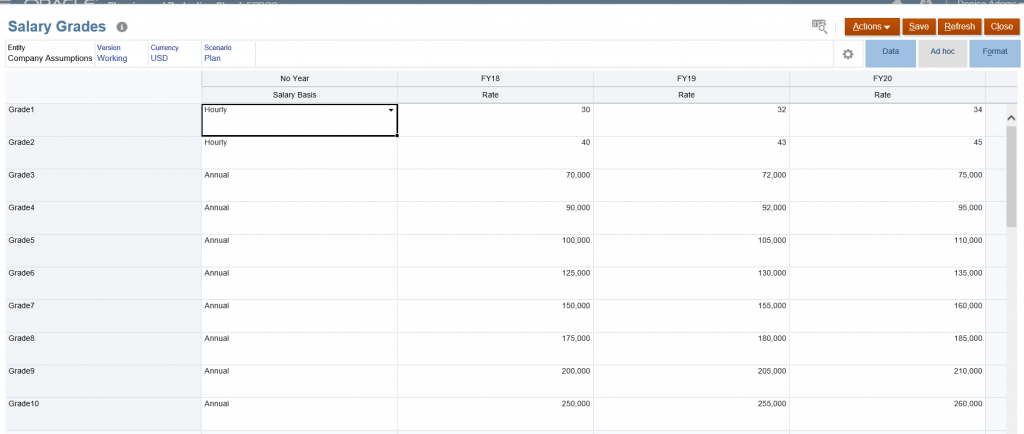
Indirect
At this point you’re probably thinking the easy-to-use modules and dynamic calculations for revenue planning by project and indirect labor planning are great, but if you don’t have a solid indirect rates model, you’ve got nothing! Well, you’re in luck! No, EPBCS won’t build you your own indirect rates model because of the complexity and uniqueness of every model, but EPBCS does come with 3 extra pods, one of which can certainly be used to hold your indirect rates cube. There is also an easy to configure data movement tool, called “smart push”, that efficiently moves data between cubes, including this custom cube. Further, the metadata created in your Projects and Workforce cubes can also be shared with your indirect cube for efficiency and ease of use.
If you haven’t already, check out our webinar for a detailed look at how we add flexibility to the indirect rate allocation process.
Financials
The Financials module is where everything from your Projects, Workforce, and Indirect cubes comes together to populate your P&L. In this module, you can also use the pre-configured driver based calculations for designated line items, such as using the current or last year’s average.
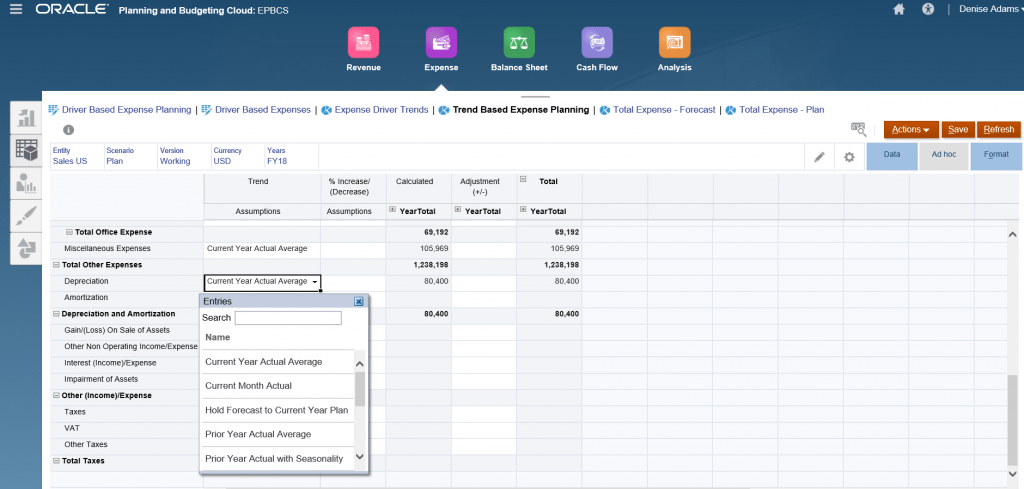
Populating the Financials module is pretty simple by utilizing the “Smart Push” functionality. This feature comes out-of-the-box for the Projects and Workforce modules and can be used to import/map all your data to the Financials module. Then, with just a few burden calculations, your P&L is populated and you are ready to run your business thanks to the out-of-the-box functionality of EPBCS!

